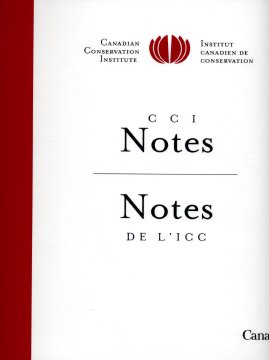 By Evelyn Fidler, Kings Landing Historical Settlement
By Evelyn Fidler, Kings Landing Historical Settlement
Every collection has hazards, some can lead to injuries, poison, respiratory issues and other health risks. Your health is more important than any collections material but there are steps you can take to reduce the risk. You can protect yourself from dangers in your collection by being proactive, identifying the materials your objects are made from, isolating known or suspected hazardous material or disposing of it (deaccessioning). Document hazardous materials and what they are on your catalogue sheets and database and label them as such to protect others.
There are two types of dangers, inherent and acquired. What are inherent hazards? They are hazardous at the time of manufacture and remain so over time1. Examples include; ammunition, radium dials, lead in stained glass, mercury in thermometers, sharp knives and blades, heavy sculptures, and firearms. Acquired hazards are added to the object over time1. Examples include mold (active or dormant), taxidermy, wet specimen preservatives (alcohol, formaldehyde), rodents (especially fresh secretions), deterioration of materials e.g. cellulose nitrate and cellulose acetate film and mercury in mirrors.
There is a difference between a hazard and a risk. A hazard is the basic property of the material2 and a risk is the probability that the hazard will cause harm and the degree to which it affects your system. The harm can come from inhalation, ingestion, skin contact2.
What steps can we take to identify hazards in our own collections? We can check records created at the time of acquisition, we can check with coworkers, chemical testing, comparison with known examples, understanding the environment, air testing, mechanical testing (e.i. Geiger counter for radium), and checking labels (i.e. if they contain the word “rad” they are probably radioactive). 
We can take steps to protect ourselves. One way is to invest in proper PPE (Personal Protective Equipment) such as gloves, goggles, steel toed boots, respirators and Tyvek suits. A must have investment is a vacuum with a Hepa filter. They tend to be expensive but some regular vacuums can be adapted to work with a Hepa filter.
Unfortunately, a blog post is not a place to go into depth about each of the hazards. There is literature online that will help you in the identification of the hazards and risks of your collections material. The Canadian Conservation Institute (CCI) Notes are a great place to start. Also reach out to the Collections Managers and Conservators in the AHNB community. The most important thing to remember is to protect yourselves, your co workers and volunteers and those who will take care of the collection in the future. Knowledge is the key.
Evelyn Fidleris the Collections Manager at Kings Landing Historical Settlement. She has been involved with the museum community for 35 years. She completed her undergrad at Acadia University before finishing graduate studies at the University of New Brunswick. After completion of her graduate degree in History, with a Post Graduate diploma in Material History, she was hired by Kings Landing in various capacities until her current position as Collections Manager. Evelyn is on the board of the AHNB and CANB (Council of Archives New Brunswick). She has completed a course at in Collections Management at the University of Victoria and is a certified Archives Appraiser through the National Archives Appraisal Board.




